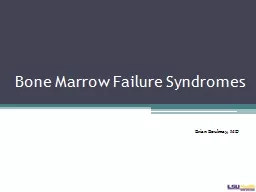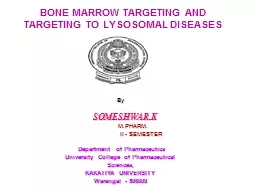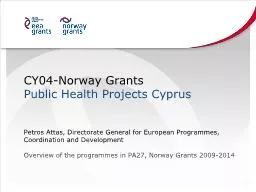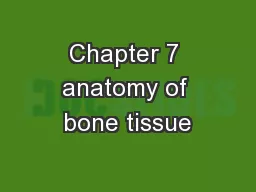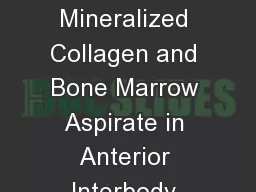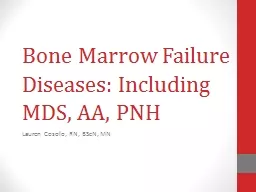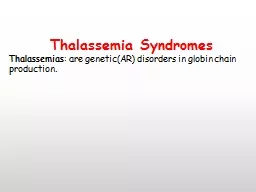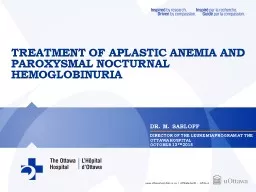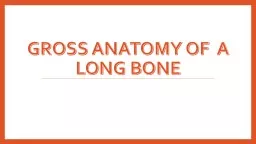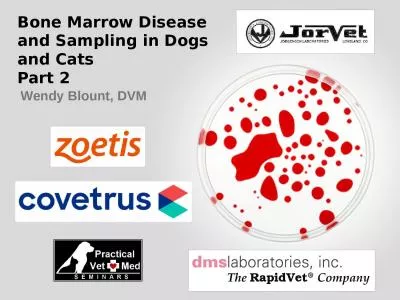PPT-Bone Marrow Failure Syndromes
Author : pasty-toler | Published Date : 2020-04-02
Brian Boulmay MD Bone Marrow Failure Ineffective marrowpoeisis is the final endpoint of many diseases Congenital Acquired Genetic Environmental or iatrogenic
Presentation Embed Code
Download Presentation
Download Presentation The PPT/PDF document " Bone Marrow Failure Syndromes" is the property of its rightful owner. Permission is granted to download and print the materials on this website for personal, non-commercial use only, and to display it on your personal computer provided you do not modify the materials and that you retain all copyright notices contained in the materials. By downloading content from our website, you accept the terms of this agreement.
Bone Marrow Failure Syndromes: Transcript
Download Rules Of Document
" Bone Marrow Failure Syndromes"The content belongs to its owner. You may download and print it for personal use, without modification, and keep all copyright notices. By downloading, you agree to these terms.
Related Documents

